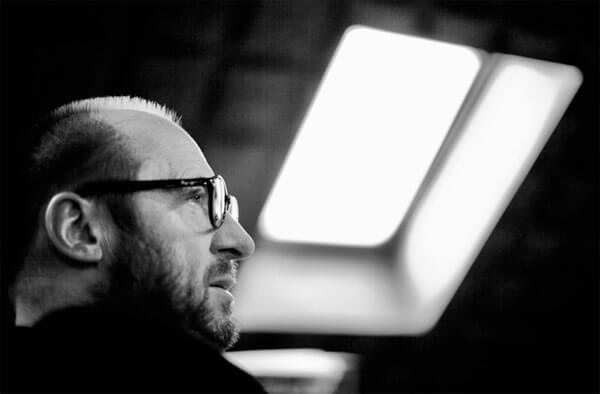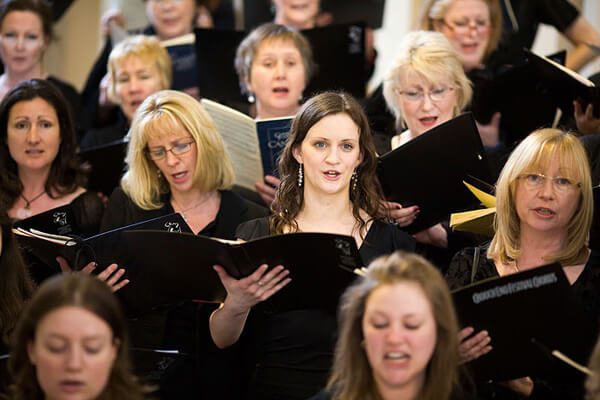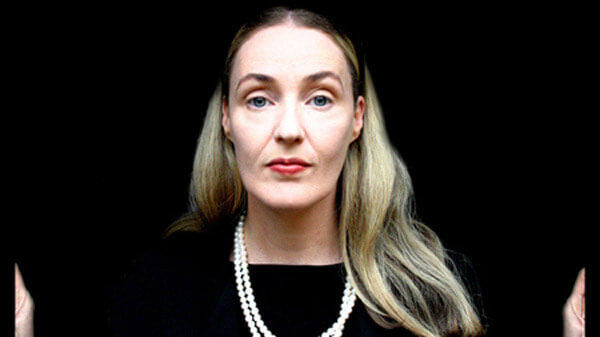 On Saturday, October 12, 2013, Polish film composer Zbigniew Preisner conducted the Britten Sinfonia Strings and Crouch End Festival Chorus in the UK premiere of Diaries of Hope, a five-movement work that featured the acclaimed vocalist and fellow film composer Lisa Gerrard. The work was inspired by the diaries of Polish children who fell victim to the Holocaust, and the evening’s program opened with a distant discussion on the subject with the acclaimed Polish film director Krzysztof Kieslowski. The pair were conversing about the diaries after a performance in Israel, and the opening paragraph details the bond that existed between the men as well as their desire to compose a piece of music on the subject, which seemed like the perfect way to introduce Zbigniew Preisner’s most recent composition. The pair had worked together most famously on Dekolog, The Double Life of Vernonika and the Three Colors trilogy in creating some of the most graceful soundtrack material of their respective careers; it was incredible the way that each score, especially for Three Colors Blue, became a meaningful component to the plot as its central character dissected the music instrument by instrument. It amplified Preisner’s delicate approach to song structure by allowing each movement to tell its own tale within the framework of an extended piece, which was spectacularly intense in the context of the story.
On Saturday, October 12, 2013, Polish film composer Zbigniew Preisner conducted the Britten Sinfonia Strings and Crouch End Festival Chorus in the UK premiere of Diaries of Hope, a five-movement work that featured the acclaimed vocalist and fellow film composer Lisa Gerrard. The work was inspired by the diaries of Polish children who fell victim to the Holocaust, and the evening’s program opened with a distant discussion on the subject with the acclaimed Polish film director Krzysztof Kieslowski. The pair were conversing about the diaries after a performance in Israel, and the opening paragraph details the bond that existed between the men as well as their desire to compose a piece of music on the subject, which seemed like the perfect way to introduce Zbigniew Preisner’s most recent composition. The pair had worked together most famously on Dekolog, The Double Life of Vernonika and the Three Colors trilogy in creating some of the most graceful soundtrack material of their respective careers; it was incredible the way that each score, especially for Three Colors Blue, became a meaningful component to the plot as its central character dissected the music instrument by instrument. It amplified Preisner’s delicate approach to song structure by allowing each movement to tell its own tale within the framework of an extended piece, which was spectacularly intense in the context of the story.

Zbigniew Preisner – Photo Anna Wloch
That emphasis on music and narrative was echoed in Diaries of Hope, which saw Preisner working collaboratively with Lisa Gerrard, an inventive musician and composer best known for her role in the Australian experimental dark wave duo Dead Can Dance. Her vocals are typically forceful and resonant, providing a mournful, human feel to Brendan Perry’s dystopian sequences as they pull from a number of genres and styles. Though the music is stark and emotive, Gerrard’s work with cinema has also brought her great critical acclaim, particularly in collaboration with Pieter Bourke for Michael Mann’s The Insider. That soundtrack could be the ultimate testament to her gift at setting the scene within a visual frame – with its rich and bleak tapestry of vocals and instrumentation. In such a film-focused context, it was intriguing to see how Gerrard would project alongside an experienced soundtrack composer such as Preisner, who on Diaries of Hope, employed the use of Ensemble Britten Sinfonia and the Crouch End Festival Chorus as well as boy soprano Archie Buchanan to explore his fragile theme.
With such a towering background in cinema, it was inevitable that this production would also seek out the tropes of visual presentation. The opening remarks in the program detailed a conversation between Preisner and Kieslowski about the diaries of children sent to die in Nazi concentration camps during the Holocaust – the forgotten Anne Franks of Eastern Europe. The stories themselves were set to embody forms of both musical response and a number of spoken tales finding their way into the composition directly through explicit readings. The borrowing of passages and poems from personal and often overlooked stories is decidedly a bold move, especially when propelled through music for a live audience, and yet, this was achieved with both grace and respect while delving into numerous aesthetic divergences.

Crouch End Festival Chorus
Preisner conducted his orchestra through an exquisite introductory piece that instantly brought to mind the intricate arrangements of his cinematic scores. With a series of solemn strings, the Barbican theater became drooped in a mind-heavy cloak of remembrance as the accompanying vocal sections were introduced. Gerrard took to the stage for the second movement, adding a previously unimagined depth to the performance as she stood directly opposite Preisner. As the orchestra opened up, they paved the way for her vocals, which were as magnificent and powerful as one might ever have hoped to imagine. Her voice stressed a grave tone, a hopeless beauty that exposed a celebration of the sadness felt for those who suffered during such a terrible period in recent history. However, after Gerrard’s initial contributions came to a close, a narrator began reading fragments of the children’s diaries. His speech was aged and stern, but it gave the performance a certain urgency that might have otherwise been detached by Gerrard’s haunting tones.

Lisa Gerrard
After such a poised and moving set, Preisner left the stage and the lights were cast on the pianist Konrad Mastylo, cellist Adam Klocek and Buchanan. It seemed incredibly fitting, essential almost, to include a child in the performance. However, the interjection of a soprano into such a harrowing and visceral scene completely shattered the mood instead of propping it up – the intention perhaps to contrast the high pitched vocal of an innocent within the gloom of his surroundings. Buchanan has miraculous range, but he appeared distant and uninvolved as he sung. Of course the words were sombre, hinged on unfilled determination and dreams of the young as they found themselves in a place of torment, but it felt like the mood had been sacrificed by the narrative as opposed to lending itself to it. Once Gerrard returned and the choir began their section, the atmosphere was rekindled, but it didn’t burn as brightly as it had at the outset. The inclusion of a boy soprano in the piece struck an awkward chord that turned an otherwise compelling performance into a forced series of events. The inclusion was neither essential to the composition nor was it aesthetically fitting. For the soprano to then be revisited in the encore made the final few minutes difficult to stomach, purely on the basis of taste. Gerrard and Preisner made for an excellent match, but the composer’s ambition seems to have stifled his vision in tackling such a deeply personal and saddening subject.



















